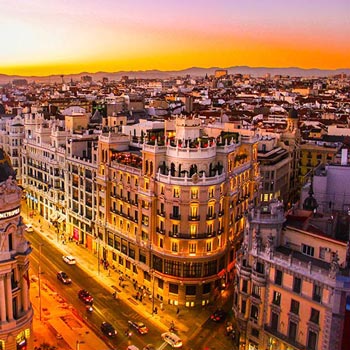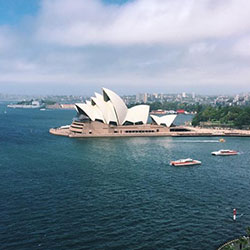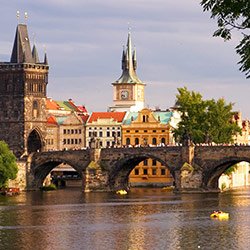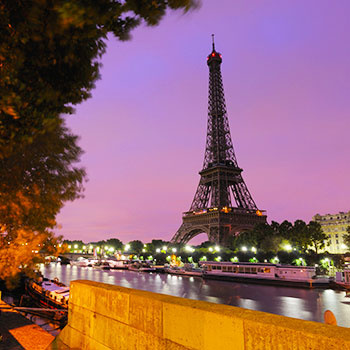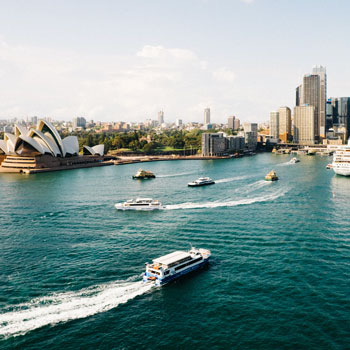19th Century Art: Impressionism & Post Impressionism
Liberal Arts & French Studies Program
Paris, France
Dates: 8/28/23 - 5/25/24
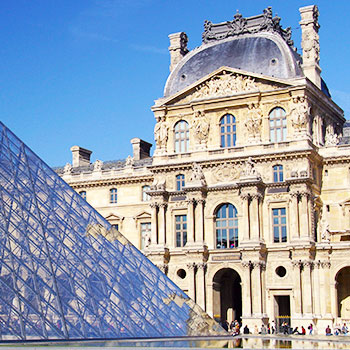
19th Century Art: Impressionism & Post Impressionism
OVERVIEW
CEA CAPA Partner Institution: CEA CAPA Paris Center
Location: Paris, France
Primary Subject Area: Art History
Other Subject Area: History
Instruction in: English
Course Code: ARH430
Transcript Source: University of New Haven
Course Details: Level 400
Recommended Semester Credits: 3
Contact Hours: 45
Prerequisites: None required, but a survey course in Art History is recommended.
DESCRIPTION
In this course, you will be engaged in an in-depth analysis and pictorial survey of one of the most remarkable and creative phases in modern art: the emergence of Impressionism and Post-Impressionism. In the Louvre, Orsay, Marmottan, Rodin, Picasso and Pompidou museums, you will study the original paintings and sculptures of that colorful, creative and revolutionary group of artists that included Monet, Manet, Renoir, Degas, Cezanne, Van Gogh, Gauguin, Seurat, Toulouse-Lautrec and Pissarro. Throughout this exploration, you will seek to understand the impact these and related artists had, not only on late 19th century and later 20th century artistic creativity, but also on the socio-political European-- and particularly French-- order from which they sprang. And to measure and evaluate the impressive legacy of Impressionism and Post-Impressionism, you will analyze in situ the many great masterpieces these movements generated and consider how they came to represent both a sharp break with the past and a harbinger of the future modernist work yet to come.
Your investigation begins by seeking out the origins of modernism, reviewing the foundational aesthetic assumptions of the late 18th and early 19th centuries and linking them to the two structural cataclysms of that anxious age: the French and industrial revolutions. To this end, you will begin with a general overview of the evolution of early 19th century painting, focusing on the key characteristics, artists and masterpieces of the three major stylistic moods of the age: Neo-Classicism, Romanticism and Realism. Here too you will study representative original paintings by David & Ingres, Delacroix & Gericault, Courbet, Millet and Daumier among many others. As you complete your study of these movements and of the fundamental aesthetic evolution heralding the arrival of the Impressionists, you will take particular note of the impact of industrial and social change and of the new technologies both preoccupying and inspiring artists of the day. Side by side with this contextual study, you will explore the new formal aesthetic revolutionizing the treatment of composition, color, light, and brush stroke.
Turning to the mid-19th revolt against official and academic art, you then trace the evolution of the many artistic impulses, theories and compositional techniques of Impressionism in the 1860's and after. You will focus on the mixed reception of Impressionism in the new art scene in Europe and on the progressive rejection of many of its principles by the 1870's and 1880's, leading to the construction of new, Post-Impressionist pictoral worlds, such as Neo-Impressionism and Symbolism.
Through a formal and contextual exploration of the most significant painting and sculpture from the late 19th century, you will set the groundwork for understanding and appreciating both the new modernist aesthetic of Impressionism and the even more innovative and revolutionary artistic expressions of the Post-Impressionism period which, taken together, conveyed the colorful exuberance and quaint confidence of the restless years before the Great War.
Your investigation begins by seeking out the origins of modernism, reviewing the foundational aesthetic assumptions of the late 18th and early 19th centuries and linking them to the two structural cataclysms of that anxious age: the French and industrial revolutions. To this end, you will begin with a general overview of the evolution of early 19th century painting, focusing on the key characteristics, artists and masterpieces of the three major stylistic moods of the age: Neo-Classicism, Romanticism and Realism. Here too you will study representative original paintings by David & Ingres, Delacroix & Gericault, Courbet, Millet and Daumier among many others. As you complete your study of these movements and of the fundamental aesthetic evolution heralding the arrival of the Impressionists, you will take particular note of the impact of industrial and social change and of the new technologies both preoccupying and inspiring artists of the day. Side by side with this contextual study, you will explore the new formal aesthetic revolutionizing the treatment of composition, color, light, and brush stroke.
Turning to the mid-19th revolt against official and academic art, you then trace the evolution of the many artistic impulses, theories and compositional techniques of Impressionism in the 1860's and after. You will focus on the mixed reception of Impressionism in the new art scene in Europe and on the progressive rejection of many of its principles by the 1870's and 1880's, leading to the construction of new, Post-Impressionist pictoral worlds, such as Neo-Impressionism and Symbolism.
Through a formal and contextual exploration of the most significant painting and sculpture from the late 19th century, you will set the groundwork for understanding and appreciating both the new modernist aesthetic of Impressionism and the even more innovative and revolutionary artistic expressions of the Post-Impressionism period which, taken together, conveyed the colorful exuberance and quaint confidence of the restless years before the Great War.
